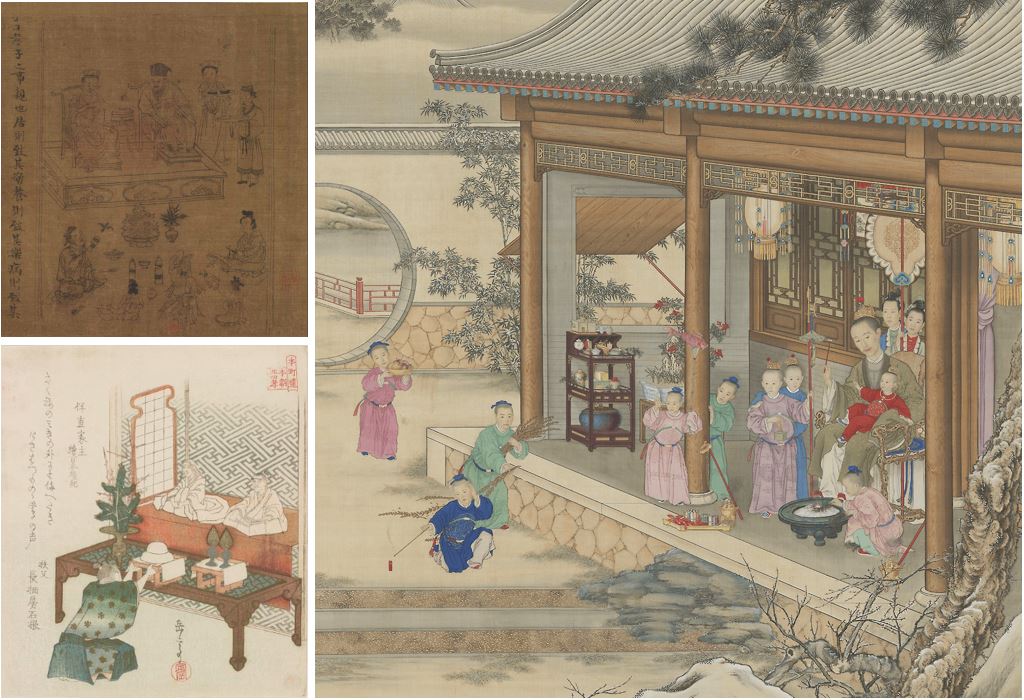
Clockwise from upper left: Li Gonglin (ca. 1041-1106), The Classic of Filial Piety (detail), ca. 1085, handscroll, ink and color on silk, Ex coll.: C. C. Wang Family, From the P. Y. and Kinmay W. Tang Family Collection, Gift of Oscar L. Tang Family, 1996, the Metropolitan Museum of Art; Guiseppe Castigolione (Lang Shining, 1688–1766), The Qianlong Emperor Enjoying the Lunar New Year (detail), 1736-38, hanging scroll, ink and color on silk, The Palace Museum; and Yashima Gakutei (1786-1868), Tomono Naoienushi, from the series, Twenty-four Japanese paragons of filial piety, early 19th century, woodblock print, Bequest of Charles H.W. Verbeck, Arthur M. Sackler Gallery, National Museum of Asian Art, Smithsonian Institution
Happy Father's Day!
We wish everyone a warm and enjoyable celebration of the pleasures and tribulations of fatherhood, with a day of princes (and princesses) gathered happily around. A day even an emperor enjoyed!
Many of the artistic and literary descriptions of the father-child relationship in East Asia focused on the Confucian fundamental text, The Classic of Filial Piety (孝經), which is thought to have been written around the 4th-3rd century B.C.E. While the father was responsible for the life, well being, education, and marriage of his children, sons and daughters owed their parents devotion, service, and obedience in turn. This obligation extended into the parents' old age and continued after their deaths, when they then received veneration due to family ancestors. This relationship and its attendant benefits and obligations are seen as being at the literal heart of society.
We will post more images of fathers and their children on AWNY's social media sites this weekend, so keep an eye out for more great works of art of our Dads!
To find AWNY on Facebook, click here
And on Instagram, click here
And on Twitter, click here
